2024
Journal - Research Article
Hall, J. R., Herkül, K., Baltar, F., Hepburn, C. D., & Martin, G. (2024). Shifts in macroalgae composition alters carbon flow in coastal Baltic Sea ecosystems: Implications for dissolved organic carbon bioavailability and flux. Frontiers in Marine Science. Advance online publication. doi: 10.3389/fmars.2024.1384165
Le, D. M., Desmond, M. J., Pritchard, D. W., & Hepburn, C. D. (2024). Thermal threshold for fertilisation and gametophyte survivorship of the giant kelp Macrocystis pyrifera. Marine Ecology Progress Series, 734, 23-33. doi: 10.3354/meps14559
Czechowski, P., de Lange, M., Heldsinger, M., Kardailsky, A., Rayment, W., Hepburn, C., … Knapp, M. (2024). Comparison of traditional and molecular surveys of fish biodiversity in southern Te Wāhipounamu/Fiordland (Aotearoa/New Zealand). Environmental DNA, 6(e514). doi: 10.1002/edn3.514
Le, D. M., Desmond, M. J., Knapp, M., Kardailsky, O., Nelson, W. A., Zuccarello, G. C., & Hepburn, C. D. (2024). Population genetic structure of the giant kelp Macrocystis pyrifera in Aotearoa/New Zealand. Marine Biology, 171, 80. doi: 10.1007/s00227-024-04397-3
Ryder, F. J., Sainsbury, K. J., Hepburn, C. D., Pritchard, D. W., & Gnanalingam, G. (2024). Re-assessment of a blackfoot abalone (Haliotis iris) population in Peraki Bay, New Zealand, after 45 years. New Zealand Journal of Marine & Freshwater Research, 2316230. Advance online publication. doi: 10.1080/00288330.2024.2316230
2023
Journal - Research Article
Kluibenschedl, A., Cornwall, C. E., Nelson, W. A., Lamare, M., Pritchard, D. W., & Hepburn, C. D. (2023). Interactive effects of ocean acidification and water flow on growth and recruitment of early successional coralline algal communities. Phycologia. Advance online publication. doi: 10.1080/00318884.2023.2272776
Cornwall, C. E., Nelson, W. A., Aguirre, J. D., Blain, C. O., Coyle, L., D'Archino, R., Desmond, M. J., Hepburn, C. D., … Thomsen, M. S. (2023). Predicting the impacts of climate change on New Zealand’s seaweed-based ecosystems. New Zealand Journal of Botany. Advance online publication. doi: 10.1080/0028825X.2023.2245786
Adams, C. I. M., Jeunen, G.-J., Cross, H., Taylor, H. R., Bagnaro, A., Currie, K., Hepburn, C., Gemmell, N. J., … Knapp, M. (2023). Environmental DNA metabarcoding describes biodiversity across marine gradients. ICES Journal of Marine Science, fsad017. Advance online publication. doi: 10.1093/icesjms/fsad017
Ryder, F. J., Gnanalingam, G., Pritchard, D. W., Rayment, W. J., Scott, N. J., & Hepburn, C. D. (2023). Drivers of fishery status for the cultural keystone pāua (Haliotis iris) in Customary fishery Protection Areas in Aotearoa New Zealand. Fisheries Research, 261, 106613. doi: 10.1016/j.fishres.2023.106613
Heldsinger, M., Hepburn, C., Jowett, T., & Rayment, W. (2023). Small marine reserves provide conservation benefits for coastal sharks in southern New Zealand. Aquatic Conservation, 33, 144-159. doi: 10.1002/aqc.3911
Twist, B. A., Rowden, A. A., Hepburn, C. D., & Nelson, W. A. (2023). The role of environmental variables in shaping temperate coralline algae communities across large spatial scales. Phycologia, 62(6), 535-550. doi: 10.1080/00318884.2022.2133480
Adams, C. I. M., Hepburn, C., Jeunen, G.-J., Cross, H., Taylor, H. R., Gemmell, N. J., … Knapp, M. (2023). Environmental DNA reflects common haplotypic variation. Environmental DNA, 5, 906-919. doi: 10.1002/edn3.352
Conference Contribution - Published proceedings: Abstract
Chand, N., Pritchard, D. W., Desmond, M., Nelson, W., D'Archino, R., & Hepburn, C. (2023). Soft sediment macroalgal communities of Otago Harbour, New Zealand. Proceedings of the 24th International Seaweed Symposium. (pp. 485). Retrieved from https://iss2023.net/
Le, D. M., Desmond, M. J., Pritchard, D. W., & Hepburn, C. D. (2023). Thermal tolerance of the giant kelp (Macrocytis pyrifera). Proceedings of the 24th International Seaweed Symposium. (pp. 374). Retrieved from https://iss2023.net/
Kluibenschedl, A., Hepburn, C. D., Bilewitch, J., Cornwall, C. E., Lamare, M., . . ., & Pritchard, D. W. (2023). Effects on ocean acidification and irradiance in growth and recruitment of early successional coralline communities. Proceedings of the 24th International Seaweed Symposium. (pp. 353). Retrieved from https://iss2023.net/
Williams, B. M., Hepburn, C. D., Pritchard, D. W., Smith, R. O., & Desmond, M. J. (2023). Changes in Macrocystis pyrifera distribution in southern New Zealand correlated with elevated sea surface temperature. Proceedings of the 24th International Seaweed Symposium. (pp. 321). Retrieved from https://iss2023.net/
Hepburn, C. (2023). Supporting community-led restoration of kelp forest ecosystems and associated fisheries [Keynote]. Proceedings of the 24th International Seaweed Symposium. (pp. 255). Retrieved from https://iss2023.net/
Edgecombe, J., Keeler-May, G., Zaiko, A., Pochon, X., Stanton, J.-A. L., Treece, J., Rand, C., Jeunen, G.-J., Hepburn, C., & Gemmell, N. (2023). A targeted eDNA approach to detect and quantify Undaria pinnatifida. Proceedings of the 1st Australian & New Zealand Environmental DNA (eDNA) Conference: Innovation & Application. Retrieved from https://ednaconference.com.au
Adams, C., Hepburn, C., Cross, H., Taylor, H., Gemmell, N., Bunce, M., Jeunen, G.-J., & Knapp, M. (2023). Environmental DNA reflects common genetic variation. Proceedings of the 1st Australian & New Zealand Environmental DNA (eDNA) Conference: Innovation & Application. Retrieved from https://ednaconference.com.au
Working Paper; Discussion Paper; Technical Report
Smale, D., Thomsen, M., Bennett, S., Duarte, C. M., Eger, A., Filbee-Dexter, K., … Hepburn, C. D., Jackson, A.-M., … Pérez-Lloréns, J. L. (2023). Biodiversity and ecosystem services. In K. Filbee-Dexter, S. Lutz, G. Grimsditch, L. Jonsson, G. Sander & H. Gundersen (Eds.), Into the blue: Securing a sustainable future for kelp forests. (pp. 45-70). Nairobi, Kenya: United Nations Environment Programme. Retrieved from https://wedocs.unep.org/20.500.11822/42255
Techera, E., Valckenaere, J., Platjouw, F. M., Gnanalingam, G., Hepburn, C. D., Nelson, W., Flack, B., & Sander, G. (2023). Kelp forests in law and policy. In K. Filbee-Dexter, S. Lutz, G. Grimsditch, L. Jonsson, G. Sander & H. Gundersen (Eds.), Into the blue: Securing a sustainable future for kelp forests. (pp. 88-100). Nairobi, Kenya: United Nations Environment Programme. Retrieved from https://wedocs.unep.org/20.500.11822/42255
2022
Journal - Research Article
James, R. K., Hepburn, C. D., Pritchard, D., Richards, D. K., & Hurd, C. L. (2022). Water motion and pH jointly impact the availability of dissolved inorganic carbon to macroalgae. Scientific Reports, 12, 21947. doi: 10.1038/s41598-022-26517-z
Le, D. M., Desmond, M. J., Pritchard, D. W., & Hepburn, C. D. (2022). Effect of temperature on sporulation and spore development of giant kelp (Macrocystis pyrifera). PLoS ONE, 17(12), e0278268. doi: 10.1371/journal.pone.0278268
Nguyen, H. T. T., Pritchard, D. W., Desmond, M. J., & Hepburn, C. D. (2022). Coralline photosynthetic physiology across a steep light gradient. Photosynthesis Research, 153, 43-57. doi: 10.1007/s11120-022-00899-7
Journal - Research Other
Bennett-Jones, L., Gnanalingam, G., Flack, B., Scott, N. J., Chambers, P., & Hepburn, C. (2022). Constraints to effective comanagement of New Zealand's customary fisheries: Experiences of the East Otago Taiāpure. Ecology & Society, 27(4), 38. doi: 10.5751/ES-13576-270438
Le, D. M., Desmond, M. J., Buschmann, A. H., Pritchard, D. W., Camus, C., Hurd, C. L., & Hepburn, C. D. (2022). Reproduction, hatchery and culture applications for the giant kelp (Macrocystis pyrifera): A methodological appraisal. Applied Phycology, 3(1), 368-382. doi: 10.1080/26388081.2022.2086823
Conference Contribution - Published proceedings: Abstract
Williams, B. M., Hepburn, C. D., Pritchard, D. W., & Desmond, M. J. (2022). Replacing invasive Undaria pinnatifida with cultivated native Macrocystis pyrifera. In A. Finigan, R. Richards & P. Vakaoti (Eds.), Proceedings of the Pacific Postgraduate Symposium: Pacific Voices XIX. (pp. 37). Dunedin, New Zealand: Pacific Islands Centre, University of Otago. Retrieved from http://hdl.handle.net/10523/16237
Other Research Output
Hepburn, C. (2022, September). Restoring marine ecosystems for what will be. University of Otago, Dunedin, New Zealand. [Inaugural Professorial Lecture].
2021
Journal - Research Article
Kluibenschedl, A., Lamare, M. D., Nelson, W. A., Barr, N. G., & Hepburn, C. D. (2021). Low irradiance amplifies negative effects of ocean acidification on recruitment of coralline algae communities. Marine Ecology Progress Series, 674, 103-113. doi: 10.3354/meps13829
Gnanalingam, G., Pritchard, D. W., Richards, D. K., Subritzky, P., Flack, B., & Hepburn, C. D. (2021). Local management to support local fisheries: Rahui (temporary closure) and bag limits for blackfoot abalone (Haliotis iris) in southern New Zealand. Aquatic Conservation, 31, 2320-2333. doi: 10.1002/aqc.3662
Bennett-Jones, L., Gnanalingam, G., Flack, B., Scott, N., Pritchard, D., Moller, H., & Hepburn, C. (2021). Translocation of black foot pāua (Haliotis iris) in a customary fishery management area: Transformation from top-down management to kaitiakitanga (local guardianship) of a cultural keystone. Pacific Conservation Biology, 27, 402-417. doi: 10.1071/PC20058
Watson, M. S., Jackson, A.-M., Lloyd-Smith, G., & Hepburn, C. D. (2021). Comparing the marine protected area network planning process in British Columbia, Canada and New Zealand: Planning for cooperative partnerships with Indigenous communities. Marine Policy, 125, 104386. doi: 10.1016/j.marpol.2020.104386
Conference Contribution - Published proceedings: Abstract
Chand, N., Pritchard, D., Desmond, M., Nelson, W., D'Archino, R., & Hepburn, C. (2021). Ecosystem function and role of soft sediment red macroalgal communities. In M. Colombo, P. Vakaoti, R. Richards, M. Schaaf, M. Taumoepeau & L. Moata'ane (Eds.), Proceedings of the Pacific Postgraduate Symposium: Pacific Voices XVIII. (pp. 7). Dunedin, New Zealand: Pacific Islands Centre, University of Otago. Retrieved from http://hdl.handle.net/10523/16236
Keeler-May, G. R., & Hepburn, C. D. (2021). Undaria pinnatifida in Breaksea Sound, Fiordland, New Zealand: An MBACI experimental design to assess removal impacts of the invasive kelp. Phycologia, 60(Suppl. 1), (pp. 99). doi: 10.1080/00318884.2021.1922050
Twigg, I., Wenley, J., Thomson, B., Baltar, F., & Hepburn, C. D. (2021). Uncovering drivers of heterotropic bacterial production and hydrogen peroxide in macroalgal habitats. Phycologia, 60(Suppl. 1), (pp. 38-39). doi: 10.1080/00318884.2021.1922050
Bagnaro, A., Hepburn, C. D., Brownstein, G., Baltar, F., Pritchard, D., & Lee, W. (2021). Improving ecosystem representation with ecotones: Case study of subtidal benthic communities in southern New Zealand. Phycologia, 60(Suppl. 1), (pp. 33). doi: 10.1080/00318884.2021.1922050
Le, D., Desmond, M., Pritchard, D., & Hepburn, C. D. (2021). Effect of temperature and different storing methods on sporulation and spore development of giant kelp (Macrocystis pyrifera). Phycologia, 60(Suppl. 1), (pp. 15-16). doi: 10.1080/00318884.2021.1922050
Jackson, A.-M., & Hepburn, C. (2021). Coastal people: Southern skies: An overview. Proceedings of the 14th Annual New Zealand Ocean Acidification Conference: Ocean Acidification in a Decade of Ocean Science. (pp. 15). Retrieved from http://nzoac.nz/conferences
Conference Contribution - Verbal presentation and other Conference outputs
Hepburn, C. (2021, July). The East Otago Taiāpure: Community-led restoration of connected fishery ecosystems. Verbal presentation at the New Zealand Marine Sciences Society (NZMSS) Conference: Titiro whakamuri, kōkiri whakamua/Looking back, to move forward, Tauranga, New Zealand.
2020
Journal - Research Article
Twist, B. A., Kluibenschedl, A., Pritchard, D., Desmond, M. J., D'Archino, R., Nelson, W. A., & Hepburn, C. D. (2020). Biomass and species richness relationships in macroalgal communities that span intertidal and subtidal zones. Marine Ecology Progress Series, 654, 67-78. doi: 10.3354/meps13496
Thomson, B., Wenley, J., Lockwood, S., Twigg, I., Currie, K., Herndl, G. J., Hepburn, C. D., & Baltar, F. (2020). Relative importance of phosphodiesterase vs. phosphomonoesterase (alkaline phosphatase) activities for dissolved organic phosphorus hydrolysis in epi- and mesopelagic waters. Frontiers in Earth Science, 8, 560893. doi: 10.3389/feart.2020.560893
Jackson, A.-M., Rewi, T., Hakopa, H., Phillips, C., Russell, P., Parr-Brownlie, L. C., Hulbe, C., Leoni, G., Mita, N., Hepburn, C., Wikaira, J., … Elder, H. (2020). Towards building an Indigenous Science Tertiary Curriculum (Part 2). New Zealand Science Review, 76(1-2), 25-31.
Bagnaro, A., Baltar, F., Brownstein, G., Lee, W. G., Morales, S. E., Pritchard, D. W., & Hepburn, C. D. (2020). Reducing the arbitrary: Fuzzy detection of microbial ecotones and ecosystems: Focus on the pelagic environment. Environmental Microbiome, 15, 16. doi: 10.1186/s40793-020-00363-w
Twigg, I. M., Baltar, F., Hall, J. R., & Hepburn, C. D. (2020). Revealing hydrogen peroxide as an external stressor in macrophyte-dominated coastal ecosystems. Oecologia, 193, 583-591. doi: 10.1007/s00442-020-04690-0
Garbary, D. J., D'Archino, R., Flack, B., Hepburn, C. D., Nelson, W. A., Pritchard, D., & Sutherland, J. E. (2020). First record of Bonnemaisonia hamifera (Bonnemaisoniales, Rhodophyta) in the South Pacific, from the South Island of New Zealand. New Zealand Journal of Marine & Freshwater Research, 54(2), 167-176. doi: 10.1080/00288330.2019.1661260
Journal - Professional & Other Non-Research Articles
Glover, M., Hepburn, C., Desmond, M., Tidey, E., & Jackson, A.-M. (2020). The lost kelp forest: A multi-disciplinary approach to understanding change of Macrocystis pyrifera habitat in Otago, New Zealand. Coastal News, 73, 5-7.
Conference Contribution - Published proceedings: Full paper
Nguyen, H. T. T., Pritchard, D. W., & Hepburn, C. D. (2020). Nitrogen and phosphorus ecophysiology of coralline algae. Journal of Applied Phycology, 32, (pp. 2583-2597). doi: 10.1007/s10811-019-02019-w
Pajusalu, L., Albert, G., Fachon, E., Hepburn, C. D., Kotta, J., Liversage, K., … Pritchard, D. W., … Martin, G. (2020). Ocean acidification may threaten a unique seaweed community and associated industry in the Baltic Sea. Journal of Applied Phycology, 32, (pp. 2469-2478). doi: 10.1007/s10811-019-01935-1
2019
Chapter in Book - Research
Hepburn, C. D. (2019). Local, community-led interventions to address global-scale problems and environmental extremes in coastal ecosystems. In E. J. Techera & G. Winter (Eds.), Marine extremes: Ocean safety, marine health and the blue economy. (pp. 141-158). Abingdon, UK: Routledge.
Journal - Research Article
Hepburn, C. D., Russell, P., Smith, A. K., Pritchard, D. W., Leahy, E. O., Coyle, L., Flack, B., Russell, K., Vanderburg, P. H., Dale, M., & Jackson, A.-M. (2019). Teaching the next generation of scientists to support communities in their restoration of ecosystems and ways of life. New Zealand Science Review, 75(4), 80-86.
Jackson, A.-M., Hakopa, H., Phillips, C., Parr-Brownlie, L. C., Russell, P., Hulbe, C., Rewi, T., Leoni, G., Mita, N., Jackson, S., Poa, D., Hepburn, C., Wikaira, J., … Elder, H. (2019). Towards building an Indigenous Science Tertiary Curriculum. New Zealand Science Review, 75(4), 69-73.
Desmond, M. J., Pritchard, D. W., Hurd, C. L., Richards, D. K., Schweikert, K., Wing, S., & Hepburn, C. D. (2019). Superior photosynthetic performance of the invasive kelp Undaria pinnatifida may contribute to continued range expansion in a wave-exposed kelp forest community. Marine Biology, 166(11), 139. doi: 10.1007/s00227-019-3593-2
Hepburn, C. D., Jackson, A.-M., Pritchard, D. W., Scott, N., Vanderburg, P. H., & Flack, B. (2019). Challenges to traditional management of connected ecosystems within a fractured regulatory landscape: A case study from southern New Zealand. Aquatic Conservation, 29(9), 1535-1546. doi: 10.1002/aqc.3152
Thomson, B., Wenley, J., Currie, K., Hepburn, C., Herndl, G. J., & Baltar, F. (2019). Resolving the paradox: Continuous cell-free alkaline phosphatase activity despite high phosphate concentrations. Marine Chemistry, 214, 103671. doi: 10.1016/j.marchem.2019.103671
Desmond, M. J., Pajusalu, L., Pritchard, D. W., Stephens, T. A., & Hepburn, C. D. (2019). Whole community estimates of macroalgal pigment concentration within two southern New Zealand kelp forests. Journal of Phycology, 55, 936-947. doi: 10.1111/jpy.12884
Salinger, M. J., Renwick, J., Behrens, E., Mullan, A. B., Diamond, H. J., Sirguey, P., Smith, R. O., … Cullen, N. J., Fitzharris, B. B., Hepburn, C. D., … Sutton, P. J. (2019). The unprecedented coupled ocean-atmosphere summer heatwave in the New Zealand region 2017/18: Drivers, mechanisms and impacts. Environmental Research Letters, 14(4). doi: 10.1088/1748-9326/ab012a
Stephens, T. A., Desmond, M. J., & Hepburn, C. D. (2019). Biomass across space and tide: Architecture of a kelp bed with implications for the abiotic environment. Hydrobiologia, 827, 391-404. doi: 10.1007/s10750-018-3788-4
Housiaux, J. A., Hepburn, C. D., & Rayment, W. J. (2019). Seasonal variation in occurrence of the sevengill shark, Notorynchus cepedianus, in two inshore habitats of southern New Zealand. New Zealand Journal of Zoology, 46(1), 48-60. doi: 10.1080/03014223.2018.1482930
Conference Contribution - Published proceedings: Full paper
Albert, G., Hepburn, C. D., Pajusalu, L., Paalme, T., Pritchard, D. W., & Martin, G. (2019). Could ocean acidification influence epiphytism? A comparison of carbon-use strategies between Fucus vesiculosus and its epiphytes in the Baltic Sea. Journal of Applied Phycology, 32, (pp. 2479-2487). doi: 10.1007/s10811-019-01953-z
Conference Contribution - Published proceedings: Abstract
Cornwall, C., Hepburn, C., Kluibenschedl, A., Lamare, M., & Nelson, W. (2019). New Zealand coralline algae impacts of ocean acidification under low light. Proceedings of the 12th New Zealand Ocean Acidification Workshop. (pp. 14). Retrieved from http://nzoac.nz
Glover, M., Hepburn, C., Desmond, M., Tidey, E., & Jackson, A.-M. (2019). Habitat mapping of Macrocystis pyrifera (M. pyrifera) along nearshore coastal Southern Otago, New Zealand. Proceedings of the New Zealand Coastal Society (NZCS) Annual Conference. (pp. 70). Retrieved from https://www.coastalsociety.org.nz/
Kluibenschedl, A., Cornwall, C., Hepburn, C., Lamare, M., & Nelson, W. (2019). Crustose coralline algae recruitment: Effects of seawater pH and irradiance. European Journal of Phycology, 54(Suppl. 1), (pp. 176). doi: 10.1080/09670262.2019.1626628
Conference Contribution - Poster Presentation (not in published proceedings)
Kerr, R., Hepburn, C., & Stephenson, W. (2019, August). Biofiltration by 'nuisance' macroalgae provide an ecosystem service in the Waikouaiti River Estuary. Poster session presented at the School of Geography Postgraduate Symposium, Dunedin, New Zealand.
Conference Contribution - Verbal presentation and other Conference outputs
Smith, A., Carson, S., Desmond, M., Pritchard, D., & Hepburn, C. (2019, March). Robust, reliable citizen science? Assessing data quality in an intertidal monitoring project in Southern New Zealand. Verbal presentation at the CitSci2019 Conference: Growing Our Family Tree, Raleigh, NC.
2018
Journal - Research Article
Jackson, A.-M., Hepburn, C. D., & Flack, B. (2018). East Otago Taiāpure: Sharing the underlying philosophies 26 years on. New Zealand Journal of Marine & Freshwater Research, 52(4), 577-589. doi: 10.1080/00288330.2018.1536066
Desmond, M. J., Suárez–Jiménez, R., Nelson, W. A., & Hepburn, C. D. (2018). Epifaunal community structure within southern New Zealand kelp forests. Marine Ecology Progress Series, 596, 71-81. doi: 10.3354/meps12587
Law, C. S., Bell, J. J., Bostock, H. C., Cornwall, C. E., Cummings, V. J., Currie, K., … Hepburn, C. D., Hurd, C. L., Lamare, M., … Smith, A. M., & Tracey, D. M. (2018). Ocean acidification in New Zealand waters: Trends and impacts. New Zealand Journal of Marine & Freshwater Research, 52(2), 155-195. doi: 10.1080/00288330.2017.1374983
Journal - Research Other
Clapcott, J., Ataria, J., Hepburn, C., Hikuroa, D., Jackson, A.-M., Kirikiri, R., & Williams, E. (2018). Mātauranga Māori: Shaping marine and freshwater futures. New Zealand Journal of Marine & Freshwater Research, 52(4), 457-466. doi: 10.1080/00288330.2018.1539404
Conference Contribution - Published proceedings: Abstract
Clapcott, J., Ataria, J., Hepburn, C., Hikuroa, D., Jackson, A.-M., Kirikiri, R., & Williams, E. (2018). Mātauranga Māori shaping marine and freshwater futures. Proceedings of the New Zealand Freshwater Sciences Society (NZFSS) 50th Annual Conference: Ka mua, ka muri: Looking back, moving forward. (pp. 56). Retrieved from http://nzfss2018.co.nz
Kluibenschedl, A., Hepburn, C., Lamare, M., & Nelson, W. (2018). New Zealand crutose coralline algae communities in a future ocean: Biological and ecological repsonses under elevated pCO2. Proceedings of the 11th New Zealand Ocean Acidification Workshop. (pp. 14). Retrieved from http://nzoac.nz
Conference Contribution - Verbal presentation and other Conference outputs
Desmond, M. J., Hepburn, C. D., Scott, N. J., & Tidey, E. J. (2018, May). Reclaiming the knowledge of fisheries habitat distribution within a customary management framework. Verbal presentation at the 17th Annual Marine Geological & Biological Habitat Mapping (GeoHab) Conference, Santa Barbara, USA.
2017
Journal - Research Article
Suárez–Jiménez, R., Hepburn, C. D., Hyndes, G. A., McLeod, R. J., Taylor, R. B., & Hurd, C. L. (2017). The invasive kelp Undaria pinnatifida hosts an epifaunal assemblage similar to native seaweeds with comparable morphologies. Marine Ecology Progress Series, 582, 45-55. doi: 10.3354/meps12321
Thomson, B., Hepburn, C. D., Lamare, M., & Baltar, F. (2017). Temperature and UV light affect the activity of marine cell-free enzymes. Biogeosciences, 14(17), 3971-3977. doi: 10.5194/bg-14-3971-2017
Fernández, P. A., Roleda, M. Y., Leal, P. P., Hepburn, C. D., & Hurd, C. L. (2017). Tissue nitrogen status does not alter the physiological responses of Macrocystis pyrifera to ocean acidification. Marine Biology, 164(9), 177. doi: 10.1007/s00227-017-3204-z
Suárez–Jiménez, R., Hepburn, C. D., Hyndes, G. A., McLeod, R. J., Taylor, R. B., & Hurd, C. L. (2017). Importance of the invasive macroalga Undaria pinnatifida as trophic subsidy for a beach consumer. Marine Biology, 164(5), 113. doi: 10.1007/s00227-017-3140-y
Desmond, M. J., Pritchard, D. W., & Hepburn, C. D. (2017). Light dose versus rate of delivery: Implications for macroalgal productivity. Photosynthesis Research, 132(3), 257-264. doi: 10.1007/s11120-017-0381-z
Conference Contribution - Published proceedings: Full paper
Sondak, C. F. A., Ang, Jr, P. O., Beardall, J., Bellgrove, A., Boo, S. M., Gerung, G. S., Hepburn, C. D., … Chung, I. K. (2017). Carbon dioxide mitigation potential of seaweed aquaculture beds (SABs). Journal of Applied Phycology, 29(5), (pp. 2363-2373). doi: 10.1007/s10811-016-1022-1
2016
Journal - Research Article
Stephens, T. A., & Hepburn, C. D. (2016). A kelp with integrity: Macrocystis pyrifera prioritises tissue maintenance in response to nitrogen fertilisation. Oecologia, 182(1), 71-84. doi: 10.1007/s00442-016-3641-2
Twist, B. A., Hepburn, C. D., & Rayment, W. J. (2016). Distribution of the New Zealand scallop (Pecten novaezealandiae) within and surrounding a customary fisheries area. ICES Journal of Marine Science, 73(2), 384-393. doi: 10.1093/icesjms/fsv228
Twist, B. A., Rayment, W. J., & Hepburn, C. D. (2016). Movement patterns of adult scallops (Pecten novaezealandiae) within a customary fisheries reserve: Implications for fine scale spatial management. Fisheries Research, 174, 160-166. doi: 10.1016/j.fishres.2015.09.020
Conference Contribution - Published proceedings: Abstract
Stephens, T., & Hepburn, C. (2016). Macrocystis pyrifera prioritizes tissue maintenance in response to nitrogen fertilization. Proceedings of the 22nd International Seaweed Symposium. Retrieved from https://www.iss-2016.org/ehome/iss2016/315864/
Conference Contribution - Verbal presentation and other Conference outputs
Payne-Harker, H., Stephenson, W., & Hepburn, C. (2016, November). Ecosystem services based approach to coastal management and planning in New Zealand. Verbal presentation at the New Zealand Coastal Society (NZCS) 24th Annual Conference, Dunedin, New Zealand.
Hepburn, C. D., Pritchard, D. W., & Scott, N. (2016, November). A place for science in the guardianship of the marine environment by indigenous communities. Verbal presentation at the New Zealand Coastal Society (NZCS) 24th Annual Conference, Dunedin, New Zealand.
Flack, B., Russell, P., Van Halderen, L., Pritchard, D., Hepburn, C., Brownstein, G., Paterson, R., & Jackson, A.-M. (2016, November). He Pātaka Wai Ora Project: Environmental monitoring on the Waikouaiti River. Verbal presentation at the New Zealand Coastal Society (NZCS) 24th Annual Conference, Dunedin, New Zealand.
Working Paper; Discussion Paper; Technical Report
van Halderen, L., Russell, P., Pritchard, D., Brownstein, G., Paterson, R., Dale, M., Hepburn, C., Jackson, A.-M., & Flack, B. (2016). He Pātaka Wai Ora Project: Environmental monitoring on the Waikouaiti River. Karitane, New Zealand: Kāti Huirapa Rūnaka ki Puketeraki. 115p. Retrieved from http://www.puketeraki.nz
2015
Journal - Research Article
Suárez Jiménez, R., Hepburn, C. D., Hyndes, G. A., McLeod, R. J., Taylor, R. B., & Hurd, C. L. (2015). Do native subtidal grazers eat the invasive kelp Undaria pinnatifida? Marine Biology, 162(12), 2521-2526. doi: 10.1007/s00227-015-2757-y
Kregting, L. T., Hepburn, C. D., & Savidge, G. (2015). Seasonal differences in the effects of oscillatory and uni-directional flow on the growth and nitrate-uptake rates of juvenile Laminaria digitata (Phaeophyceae). Journal of Phycology, 51(6), 1116-1126. doi: 10.1111/jpy.12348
Suárez Jiménez, R., Hepburn, C. D., Hyndes, G. A., McLeod, R. J., & Hurd, C. L. (2015). Contributions of an annual invasive kelp to native algal assemblages: Algal resource allocation and seasonal connectivity across ecotones. Phycologia, 54(5), 530-544. doi: 10.2216/15-39.1
Gnanalingam, G., & Hepburn, C. (2015). Flexibility in temporary fisheries closure legislation is required to maximise success. Marine Policy, 61, 39-45. doi: 10.1016/j.marpol.2015.06.033
Desmond, M. J., Pritchard, D. W., & Hepburn, C. D. (2015). Light limitation within southern New Zealand kelp forest communities. PLoS ONE, 10(4), e0123676. doi: 10.1371/journal.pone.0123676
Cornwall, C. E., Pilditch, C. A., Hepburn, C. D., & Hurd, C. L. (2015). Canopy macroalgae influence understorey corallines' metabolic control of near-surface pH and oxygen concentration. Marine Ecology Progress Series, 525, 81-95. doi: 10.3354/meps11190
Pritchard, D. W., Hurd, C. L., Beardall, J., & Hepburn, C. D. (2015). Restricted use of nitrate and a strong preference for ammonium reflects the nitrogen ecophysiology of a light-limited red alga. Journal of Phycology, 51(2), 277-287. doi: 10.1111/jpy.12272
O'Connell-Milne, S. A., & Hepburn, C. D. (2015). A harvest method informed by traditional knowledge maximises yield and regeneration post harvest for karengo (Bangiaceae). Journal of Applied Phycology, 27(1), 447-454. doi: 10.1007/s10811-014-0318-2
Conference Contribution - Verbal presentation and other Conference outputs
Hepburn, C. (2015, November). What can we do about ocean acidification? Kelp forests as buffers against declining ocean pH. Verbal presentation at the Toxicology Symposium: Toxicology for the Modern Researcher, Dunedin, New Zealand.
2014
Journal - Research Article
Stephens, T. A., & Hepburn, C. D. (2014). Mass-transfer gradients across kelp beds influence Macrocystis pyrifera growth over small spatial scales. Marine Ecology Progress Series, 515, 97-109. doi: 10.3354/meps10974
Cornwall, C. E., Boyd, P. W., McGraw, C. M., Hepburn, C. D., Pilditch, C. A., Morris, J. N., Smith, A. M., & Hurd, C. L. (2014). Diffusion boundary layers ameliorate the negative effects of ocean acidification on the temperate coralline macroalga Arthrocardia corymbosa. PLoS ONE, 9(5), e97235. doi: 10.1371/journal.pone.0097235
James, R. K., Hepburn, C. D., Cornwall, C. E., McGraw, C. M., & Hurd, C. L. (2014). Growth response of an early successional assemblage of coralline algae and benthic diatoms to ocean acidification. Marine Biology, 161(7), 1687-1696. doi: 10.1007/s00227-014-2453-3
Somerville, G. J., Krkosek, M., & Hepburn, C. D. (2014). A matrix model and elasticity analysis for New Zealand's blackfoot pāua Haliotis iris. Fisheries Research, 151, 158-168. doi: 10.1016/j.fishres.2013.11.008
McCarthy, A., Hepburn, C., Scott, N., Schweikert, K., Turner, R., & Moller, H. (2014). Local people see and care most? Severe depletion of inshore fisheries and its consequences for Māori communities in New Zealand. Aquatic Conservation, 24(3), 369-390. doi: 10.1002/aqc.2378
Conference Contribution - Published proceedings: Abstract
Fernandez, P., Roleda, M., Rautenberger, R. R., Hepburn, C., & Hurd, C. (2014). Inorganic carbon-use strategies and physiology of Macrocystis pyrifera under an ocean acidification scenario. Proceedings of the 7th New Zealand Ocean Acidification Workshop. Retrieved from http://www.otago.ac.nz/oceanacidification/news/
Working Paper; Discussion Paper; Technical Report
Russell, P., Hepburn, C. D., Rayment, W. J., Twist, B. A., & Kearney, E. J. F. (2014). Ngā Tipa o Te Whaka ā Te Wera Mātaitai: Stratified survey of the Paterson Inlet customary scallop (Pecten novaezelandiae) fishery, 2013: New Zealand Fisheries Assessment Report 2014/16. Wellington, New Zealand: Ministry for Primary Industries. 40p.
2013
Journal - Research Article
Cornwall, C. E., Hepburn, C. D., McGraw, C. M., Currie, K. I., Pilditch, C. A., Hunter, K. A., Boyd, P. W., & Hurd, C. L. (2013). Diurnal fluctuations in seawater pH influence the response of a calcifying macroalga to ocean acidification. Proceedings of the Royal Society B, 280, 20132201. doi: 10.1098/rspb.2013.2201
Desmond, M. J., McLeod, R. J., & Hepburn, C. D. (2013). Analysis of trace metal concentration in a degraded lagoon in East Otago, New Zealand. New Zealand Journal of Marine & Freshwater Research, 47(4), 469-480. doi: 10.1080/00288330.2013.782878
Pritchard, D. W., Hurd, C. L., Beardall, J., & Hepburn, C. D. (2013). Survival in low light: Photosynthesis and growth of a red alga in relation to measured in situ irradiance. Journal of Phycology, 49(5), 867-879. doi: 10.1111/jpy.12093
Chew, C. A., Hepburn, C. D., & Stephenson, W. (2013). Low-level sedimentation modifies behaviour in juvenile Haliotis iris and may affect their vulnerability to predation. Marine Biology, 160(5), 1213-1221. doi: 10.1007/s00227-013-2173-0
Cornwall, C. E., Hepburn, C. D., Pilditch, C. A., & Hurd, C. L. (2013). Concentration boundary layers around complex assemblages of macroalgae: Implications for the effects of ocean acidification on understory coralline algae. Limnology & Oceanography, 58(1), 121-130. doi: 10.4319/lo.2013.58.1.0121
Conference Contribution - Published proceedings: Abstract
Fernández, P., Roleda, M., Rautenberger, R., Hepburn, C., & Hurd, C. (2013). Effects of ocean acidification on growth, photosynthesis and carbonic anhydrase activity of Macrocystis pyrifera. Proceedings of the 6th New Zealand Ocean Acidification Workshop. (pp. 27). Retrieved from http://www.otago.ac.nz/oceanacidification/news/
Cornwall, C. E., Hepburn, C. D., Pildtich, C. A., Boyd, P. W., & Hurd, C. L. (2013). The importance of water motion in ocean acidification research. Proceedings of the 6th New Zealand Ocean Acidification Workshop. (pp. 19). Retrieved from http://www.otago.ac.nz/oceanacidification/news/
Russell, P., & Hepburn, C. D. (2013). Energy use and sustainability at South Island aquaculture operations. Proceedings of the Otago Energy Research Centre (OERC) Symposium. (pp. 5). Retrieved from http://www.otago.ac.nz/oerc/
2012
Journal - Research Article
Hepburn, C. D., Frew, R. D., & Hurd, C. L. (2012). Uptake and transport of nitrogen derived from sessile epifauna in the giant kelp Macrocystis pyrifera. Aquatic Biology, 14(2), 121-128. doi: 10.3354/ab00382
Cornwall, C. E., Hepburn, C. D., Pritchard, D., Currie, K. I., McGraw, C. M., Hunter, K. A., & Hurd, C. L. (2012). Carbon-use strategies in macroalgae: Differential responses to lowered pH and implications for ocean acidification. Journal of Phycology, 48(1), 137-144. doi: 10.1111/j.1529-8817.2011.01085.x
Conference Contribution - Published proceedings: Abstract
Hurd, C. L., Currie, K. I., Hepburn, C. D., McGraw, C. M., Hunter, K. A., & Boyd, P. W. (2012). Differential susceptibility of coastal calcifers to ocean acidification. Proceedings of the Ocean Sciences Meeting. (pp. 208). Retrieved from http://www.sgmeet.com/osm2012/
Cornwall, C. E., Hepburn, C. D., McGraw, C., Currie, K., Pilditch, C., Hunter, K. A., Boyd, P. W., & Hurd, C. (2012). The need to manipulate natural variability in pH in ocean acidification experiments. Proceedings of the 3rd International Symposium on the Ocean in a High-CO2 World: Ocean Acidification. (pp. 46). Retrieved from http://ocean-acidification.net/international-symposia/2012-symposium-on-the-ocean-in-a-high-co2-world/
2011
Journal - Research Article
Hurd, C. L., Cornwall, C. E., Currie, K., Hepburn, C. D., McGraw, C. M., Hunter, K. A., & Boyd, P. W. (2011). Metabolically induced pH fluctuations by some coastal calcifiers exceed projected 22nd century ocean acidification: A mechanism for differential susceptibility? Global Change Biology, 17, 3254-3262. doi: 10.1111/j.1365-2486.2011.02473.x
Richards, D. K., Hurd, C. L., Pritchard, D. W., Wing, S. R., & Hepburn, C. D. (2011). Photosynthetic response of monospecific macroalgal stands to density. Aquatic Biology, 13(1), 41-49. doi: 10.3354/ab00349
Hepburn, C. D., Pritchard, D. W., Cornwall, C. E., McLeod, R. J., Beardall, J., Raven, J. A., & Hurd, C. L. (2011). Diversity of carbon use strategies in a kelp forest community: Implications for a high CO2 ocean. Global Change Biology, 17(7), 2488-2497. doi: 10.1111/j.1365-2486.2011.02411.x
Conference Contribution - Published proceedings: Abstract
Chew, C., Hepburn, C., & Stephenson, W. (2011). The effects of sedimentation on the growth and mortality of juvenile Haliotis iris and their living habitat (crustose coralline algae). Proceedings of the New Zealand Marine Sciences Society (NZMSS) Conference: Understanding, Managing, and Conserving our Marine Environment. (pp. 37). Retrieved from http://nzmss.org/assets/Conference/NZMSS2011AbstractsPosterPresentations.pdf
Richards, D., Hurd, C. L., Pritchard, D. W., Wing, S. R., & Hepburn, C. D. (2011). Photosynthetic response of monospecific macroalgal stands to density. Proceedings of the New Zealand Marine Sciences Society (NZMSS) Conference: Understanding, Managing, and Conserving our Marine Environment. (pp. 24). Retrieved from http://nzmss.org/assets/Conference/NZMSS2011AbstractsOralPresentations.pdf
McCowan, T., Hepburn, C., Prendeville, G., & Gemmell, N. (2011). Genetic approaches to reseeding in New Zealand's Blackfoot pāua (Haliotis iris). Proceedings of the New Zealand Marine Sciences Society (NZMSS) Conference: Understanding, Managing, and Conserving our Marine Environment. (pp. 18). Retrieved from http://nzmss.org/assets/Conference/NZMSS2011AbstractsOralPresentations.pdf
James, R., Hurd, C., & Hepburn, C. (2011). Carbon limitation in macroalgal communities and their response to ocean acidification. Proceedings of the New Zealand Marine Sciences Society (NZMSS) Conference: Understanding, Managing, and Conserving our Marine Environment. (pp. 13). Retrieved from http://nzmss.org/assets/Conference/NZMSS2011AbstractsOralPresentations.pdf
Jackson, A.-M., Hurd, C., & Hepburn, C. (2011). Strategies employed by communities to manage taiäpure. Proceedings of the New Zealand Marine Sciences Society (NZMSS) Conference: Understanding, Managing, and Conserving our Marine Environment. (pp. 13). Retrieved from http://nzmss.org/assets/Conference/NZMSS2011AbstractsOralPresentations.pdf
Hepburn, C. (2011). Pathways to fisheries restoration through customary fisheries tools. Proceedings of the New Zealand Marine Sciences Society (NZMSS) Conference: Understanding, Managing, and Conserving our Marine Environment. (pp. 10-11). Retrieved from http://nzmss.org/assets/Conference/NZMSS2011AbstractsOralPresentations.pdf
Cornwall, C., Hepburn, C., McGraw, C., & Hurd, C. (2011). Evidence from the field and laboratory show calcifying macroalgae may be more tolerant to the effects of ocean acidification than previous research suggests. Proceedings of the New Zealand Marine Sciences Society (NZMSS) Conference: Understanding, Managing, and Conserving our Marine Environment. (pp. 6). Retrieved from http://nzmss.org/assets/Conference/NZMSS2011AbstractsOralPresentations.pdf
2010
Journal - Research Article
McGraw, C. M., Cornwall, C. E., Reid, M. R., Currie, K. I., Hepburn, C. D., Boyd, P., Hurd, C. L., & Hunter, K. A. (2010). An automated pH-controlled culture system for laboratory-based ocean acidification experiments. Limnology & Oceanography: Methods, 8, 686-694. doi: 10.4319/lom.2010.8.686
Conference Contribution - Published proceedings: Full paper
Jackson, A.-M., Hepburn, C. D., & East Otago Taiāpure Management Committee. (2010). Rangatiratanga and customary fisheries management. In J. S. Te Rito & S. M. Healy (Eds.), Proceedings of the 4th International Traditional Knowledge Conference: Kei Muri i te Awe Kāpara he Tangata Kē: Recognising, Engaging, Understanding Difference. (pp. 165-170). Auckland, New Zealand: Knowledge Exchange Programme of Ngā Pae o te Māramatanga. [Full Paper]
Hepburn, C. D., Kainamu, A., Vanderburg, P. H., Jackson, A.-M., & Flack, B. (2010). Ki Uta ki Tai: From the mountains to the sea: Holistic approaches to customary fisheries management. In J. S. Te Rito & S. M. Healy (Eds.), Proceedings of the 4th International Traditional Knowledge Conference: Kei Muri i te Awe Kāpara he Tangata Kē: Recognising, Engaging, Understanding Difference. (pp. 142-148). Auckland, New Zealand: Knowledge Exchange Programme of Ngā Pae o te Māramatanga. [Full Paper]
Hepburn, C. D., Flack, B. R., Richards, D. K., & Wing, S. R. (2010). Providing local ecological information for the management of pāua fisheries within taiāpure and mātaitai. In R. Taonui (Ed.), Proceedings of Ngā Kete a Rēhua Inaugural Māori Research Symposium Te Waipounamu. (pp. 220-225). Christchurch, New Zealand: Aotahi School of Māori and Indigenous Studies, University of Canterbury. [Full Paper]
Conference Contribution - Published proceedings: Abstract
East Otago Taiāpure Management Committee, Hepburn, C., Jackson, A.-M., Scott, N., & Moller, H. (2010). East Otago Taiāpure: The long road to community-led fisheries managment. New Zealand Ecological Society Annual Conference: Biodiversity: 2010 and Beyond. (pp. 30). Retrieved from http://www.nzesconference.org.nz/programme
Richards, D. K., Hepburn, C. D., & Moller, H. (2010). Catch per unit effort as a monitoring tool for community-led management of customary pāua (Haliotis iris) harvesting. New Zealand Ecological Society Annual Conference: Biodiversity: 2010 and Beyond. (pp. 103-104). Retrieved from http://www.nzesconference.org.nz/programme
McGraw, C., Cornwall, C., Reid, M. R., Currie, K., Hepburn, C., Boyd, P. W., Hurd, C., & Hunter, K. A. (2010). Automated, pCO2-controlled culture system for the study of coralline algae. Eos Trans. AGU, 91(26, Ocean Sci. Meet. Suppl.). BO45A-16. [Abstract]
Cornwall, C., McGraw, C., Hepburn, C., Reid, M., Currie, K., Hunter, K., & Hurd, C. (2010). The effects of ocean acidification on the articulate coralline alga (Arthrocardia corymbosa). Proceedings of the New Zealand Marine Sciences Society 50th Anniversary Conference. (pp. 26). NZMSS. Retrieved from www.nzmss.org/conference
Win, R., Hepburn, C., & Wing, S. (2010). Identification of macroalgae community for preferred habitat and food sources of coastal reef fish on the Otago coast. Proceedings of the New Zealand Marine Sciences Society 50th Anniversary Conference. (pp. 35). NZMSS. Retrieved from www.nzmss.org/conference
McLeod, R., & Hepburn, C. D. (2010). Do fatty acids really give us insight into diet? Proceedings of the New Zealand Marine Sciences Society 50th Anniversary Conference. (pp. 77). NZMSS. Retrieved from www.nzmss.org/conference
2009
Journal - Research Article
Hurd, C. L., Hepburn, C. D., Currie, K. I., Raven, J. A., & Hunter, K. A. (2009). Testing the effects of ocean acidification on algal metabolism: Considerations for experimental designs. Journal of Phycology, 45, 1236-1251. doi: 10.1111/j.1529-8817.2009.00768.x
Conference Contribution - Published proceedings: Abstract
Cornwall, C., Hepburn, C., Hunter, K., Currie, K., & Hurd, C. (2009). The effects of ocean acidification on New Zealand macroalgae. In S. O'Shea, M. J. Costello & K. O'Connell (Eds.), Proceedings of the Joint New Zealand Marine Sciences and Meteorological Societies Conference. (pp. 34). Retrieved from http://nzmss.rsnz.org
Win, R., Hepburn, C., & Wing, S. (2009). Preferred macroalgae habitat identification for coastal reef fish recruitment and adult populations on the Otago coast. In S. O'Shea, M. J. Costello & K. O'Connell (Eds.), Proceedings of the Joint New Zealand Marine Sciences and Meteorological Societies Conference. (pp. 116). Retrieved from http://nzmss.rsnz.org
Richards, D., Hepburn, C., Wing, S., & Hurd, C. (2009). Primary production rates in subtidal macroalgal beds: Does the presence of Undaria pinnatifida make a difference? In S. O'Shea, M. J. Costello & K. O'Connell (Eds.), Proceedings of the Joint New Zealand Marine Sciences and Meteorological Societies Conference. (pp. 98). Retrieved from http://nzmss.rsnz.org
Hurd, C., Hepburn, C., Beardall, J., Cornelisen, C. D., Nelson, W., Cornwall, C., Pritchard, D., Dewdney, R., Bell, S., … Richards, D. (2009). Carbon and nitrogen physiology of seaweeds along a light gradient. Phycologia, 48(4, Suppl.), (pp. 45). [Abstract]
2008
Journal - Research Article
Kregting, L. T., Hepburn, C. D., Hurd, C. L., & Pilditch, C. A. (2008). Seasonal patterns of growth and nutrient status of the macroalga Adamsiella chauvinii (Rhodophyta) in soft sediment environments. Journal of Experimental Marine Biology & Ecology, 360(2), 94-102.
Russell, L. K., Hepburn, C. D., Hurd, C. L., & Stuart, M. D. (2008). The expanding range of Undaria pinnatifida in southern New Zealand: Distribution, dispersal mechanisms and the invasion of wave-exposed environments. Biological Invasions, 10(1), 103-115. doi: 10.1007/s10530-007-9113-1
Conference Contribution - Verbal presentation and other Conference outputs
Hepburn, C. D., Flack, B. R., Richards, D. K., & Wing, S. R. (2008, September). Providing local ecological information for the management of pāua fisheries within taiāpure and mātaitai. Verbal presentation at the Ngā Kete a Rēhua Inaugural Māori Research Symposium Te Waipounamu, Christchurch, New Zealand.
2007
Journal - Research Article
Hepburn, C. D., Holborow, J. D., Wing, S. R., Frew, R. D., & Hurd, C. L. (2007). Exposure to waves enhances the growth rate and nitrogen status of the giant kelp Macrocystis pyrifera. Marine Ecology Progress Series, 339, 99-108. doi: 10.3354/meps339099
2006
Journal - Research Article
Hepburn, C. D., Hurd, C. L., & Frew, R. D. (2006). Colony structure and seasonal differences in light and nitrogen modify the impact of sessile epifauna on the giant kelp Macrocystis pyrifera (L.) C Agardh. Hydrobiologia, 560, 373-384.
2005
Journal - Research Article
Hepburn, C. D., & Hurd, C. L. (2005). Conditional mutualism between the giant kelp Macrocystis pyrifera and colonial epifauna. Marine Ecology Progress Series, 302, 37-48.
2004
Conference Contribution - Poster Presentation (not in published proceedings)
Hepburn, C., Holborow, J., Hurd, C. L., Wing, S. R., & Frew, R. (2004, February). Seasonal mass-transport limited growth of the giant kelp macrocystis pyrifera. Poster session presented at the American Society of Limnology and Oceanography and the Oceanography Society Ocean Research Conference, Honolulu, Hawaii.
2003
Conference Contribution - Verbal presentation and other Conference outputs
Hepburn, C. D., & Hurd, C. L. (2003). Nutritional relationships between the giant kelp Macrocystis pyrifera and colonial epifauna that live on its surface. Verbal presentation at the New Zealand Marine Aciences Society: Review 45, New Zealand.
Awarded Doctoral Degree
Hepburn, C. D. (2003). The influence of sessile epifauna on the ecology and physiology of the giant kelp Macrocystis pyrifera (L.) C. Agardh (PhD). University of Otago, Dunedin, New Zealand. 196p.
2002
Conference Contribution - Published proceedings: Abstract
Hepburn, C. D., Holborow, J. D. L., Hurd, C. L., Wing, S. R., & Frew, R. D. (2002). Growth and Erosion rates of Macrocystis pyrifera in differing hydrodynamic environments in Paterson Inlet, Stewart Island, New Zealand. Proceeding of the Australasian Society for Phycology and Aquatic Botany. [Abstract]
Conference Contribution - Verbal presentation and other Conference outputs
Hepburn, C. D., Holborow, J., Hurd, C. L., Wing, S., & Frew, R. (2002). Nitrogen status, growth and erosion rates of Macrocystis pyrifera in differing hydrodynamic environments in Paterson Inlet, Stewart Island. Verbal presentation at the New Zealand Marine Aciences Society: Review 44, New Zealand.
2001
Conference Contribution - Verbal presentation and other Conference outputs
Hepburn, C., Hurd, C. L., & Frew, R. (2001). The influence of the encrusting bryozoan Membranipora membranacea on the growth and nutrient physiology of Macrocystis pyrifera. Verbal presentation at the 7th International Phycological Congress, Thessaloniki, Greece.
2000
Conference Contribution - Verbal presentation and other Conference outputs
Hepburn, C. D., & Hurd, C. L. (2000, February). The influence of the encrusting bryozoan Membranipora membranacea on the seasonal growth and nutrient physiology of Macrocystis pyrifera. Verbal presentation at the Australasian Society for Phycology and Aquatic Botany 15th Annual Conference, Sorrento, Australia.
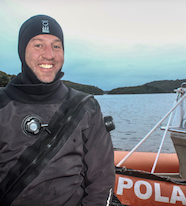 Director, Aquaculture and Fisheries Programme
Director, Aquaculture and Fisheries Programme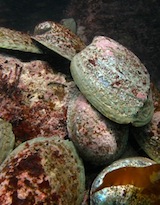
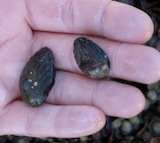 Fisheries restoration
Fisheries restoration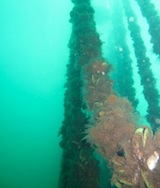 Integrated aquaculture
Integrated aquaculture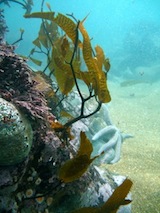 Impacts of elevated CO2 on coastal ecosystems
Impacts of elevated CO2 on coastal ecosystems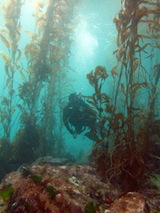 Ecology and physiology of macroalgae
Ecology and physiology of macroalgae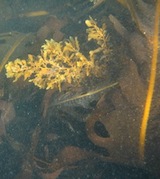 Invasion by exotic marine organisms
Invasion by exotic marine organisms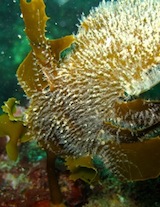 Macroalgal / invertebrate interactions
Macroalgal / invertebrate interactions